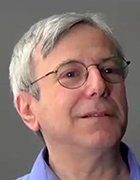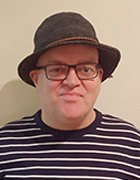Google's Solve for X Program nears this year's final round
Interested in solving the worlds greatest problems? Well, Google is, and if you want Google to give some of your solutions a little attention, then getting in on their Solve for X program is a must.
Google's ambitious Solve for X initiative brings together entrepreneurs and experts to help solve the world's most pressing problems. On the initiative's website, Google compares Solve for X projects with the moon shots of the 1960s and 70s. Each Solve for X moonshot project has three characteristics:
- The project addresses a big, global problem
- The project involves a radical new solution/perspective/approach to the problem
- The project leverages a breakthrough in science or technology.
This year, Google Developer Group: GDG North Jersey is one of twelve worldwide satellite organizations that have been selected to screen applicants for the Solve for X program. As part of this screening, GDG North Jersey has received 72 moonshot proposals and has conducted four preliminary sessions in which a total of 24 innovators presented their ideas to panelists and other attendees. From these four preliminary sessions, Solve for X team members will select four finalists. Each finalist (from the GDG North Jersey program and from the eleven other regional programs) will be invited to join Google's Solve for X pioneer program.
GDG North Jersey ran its fourth and final preliminary session on January 17 at Stevens Institute of Technology in Hoboken, NJ. The session featured six pioneer projects, each involving an ambitious new idea. Here's a look at what some of the brightest minds who are a part of the Solve for X program contributed:
Medical diagnostic technologies
Mark Punyanitya is a biomedical engineer and co-founder of MagnePath Pty Ltd, a company whose goal is to make comprehensive, individualized health information available to medical professionals and consumers.
Among the medical diagnostic technologies, Magnetic Resonance Imaging (MRI) is one of the least invasive. MRI scanning involves no surgery, no radiation, no injections, and no barium ingestion. But MRI technology suffers from a lack of open standards. There are several large vendors of MRI equipment (Siemens, Philips, GE, and Resonance Health to name a few). Each vendor has its own hardware, its own software, and its own data storage format. In a world with approximately 3000 MRI scanners and roughly 125 million scans begin done each year, standardization is becoming critical.
MagnePath's apps analyze data from MRI scans done with any of the major vendors' hardware. One app, the FatMap app, takes data from a 30-second MRI scan and creates a color, head-to-toe map of a patient's body fat. Similar apps in MagnePath's MapApps suite map a patient's joints, muscles and liver health. Because these apps are written in Java, the apps run on PCs, Macs and Linux computers. This use of readily-available equipment reduces the cost of doing medical tests. By combining such MRI scan results with the wealth of information from wearable devices, consumers can view their total-body health summaries on any mobile device.
MagnePath's goal is to go beyond mapping by making it practical for the consumer to track and predict his or her overall health trends.
Saving the environment
Dr. Gedi Mainelis is a professor in the Department of Environmental Sciences at Rutgers University. His moonshot involves the capture ultra-fine particulate matter from diesel exhaust.
Current filtering technologies (DPFs -- Diesel Particulate Filters) capture between 50% and 85% of particulate waste from diesel engines. But the current technologies have drawbacks. Over time, the collector that's attached to a diesel engine fills up with waste. This waste creates backpressure to the engine which results in inefficient engine operation. In addition, periodic burning to remove this waste from the collector results in the emission of nanoparticles. Because they're so small, nanoparticles present health risks above and beyond those of larger particulate emissions.
Mainelis's technology ionizes the particles from a diesel engine and then collects these particles in a container coated with a superhydrophobic substance -- a substance that can't become wet. (Inspiration for the use of this substance comes from the lotus leaf, because water naturally beads up and falls off of the leaf.) Waste can easily be washed off of Mainelis's collecting container, and the washing process doesn't emit nanoparticles.
Quenching the thirst for bandwidth
Steve Saldana's XLABS group claims to have found one of the holy grails of modern computing; namely, a method for compressing data with a 99.92% ratio without losing any of the data.
Sending large amounts of information over the Internet consumes resources, and the use of resources can be time consuming. Consider Netflix whose streaming videos account for 34% of all Internet traffic during peak viewing times in the United States. Netflix needs to reduce the amount of data that it sends to your home without losing any noticeable video quality.
To reduce the amount of data that it sends, Netflix leases a technology from eyeio.com. According to Saldana, the eyeio technology shrinks the amount of data in half at the expense of some video quality. In comparison, the new XLABS algorithms cut the amount of data to roughly one one-thousandth of its original size without sacrificing any video quality.
XLABS's secret compression technique comes from the RITA neural network. RITA came up with this technique by experimenting with methods that neural network wasn't specifically programmed to use. (Like other neural networks, RITA can experiment by mimicking the brain's basic structure and the brain's ability to learning new things.)
For a fictionalized presentation of the work that Saldana describes, watch the Silicon Valley TV series on HBO.
Waving goodbye to beach erosion
Karlin Yeh presented an idea for countering beach erosion with renewable wave energy. Current methods employed by the US Army Corps of Engineers involve transporting and pumping large amounts of sand from offshore to the beach and spreading the sand using bulldozers. Yeh believes that this can be done better (without any expensive cargo barges, pipes or bulldozers) using submersible wave pumps.
Submersible pumps already exist for hydroelectricity and desalinization. But these pumps have very low flow capacity -- not the larger capacity required to move sand onto a beach. By taking advantage of a principle called the Coandă Effect, Yeh has built prototypes with increased flow -- evidence that such pumps can move large amounts of sand inexpensively and unobtrusively.
When Yeh's pumps operate, they add a murky quality to the water. So the best strategy will be to run such pumps off-season when tourists aren't visiting beaches. But compared with another category of pumps (the surface wave generators) submersible pumps are completely out of sight. These pumps will have little impact on people residing year-round near the beach, and will be invisible to beach goers during the regular tourist season. Yeh estimates that the use of his technology can save $36 million dollars over a 25 year period to maintain a 1,500-foot stretch of beach. That's a savings of over 90% of the current cost.
Automated speed lanes
Attorney James Finkle is on the board of directors of New Jersey Transit. Mr. Finkle envisions technology that bridges the gap between today's highway congestion and the self-driving cars of the future. This bridge technology is the creation of automated speed lanes.
When you enter an automated speed lane, you yield control of your vehicle to the lane's centralized computer system. From that moment on (until you exit the highway) the lane's computer communicates with your vehicle's electronic control module. The module controls your vehicle's speed and direction.
An automated speed lane has several advantages over conventional do-it-yourself driving. By monitoring and controlling all vehicles on a road, a central automated speed lane system can determine and implement the best cooperative driving patterns for all the vehicles in real time. The system can control vehicles for maximum fuel efficiency and optimal braking. Accidents caused by distracted drivers are no longer a concern. (In fact, on an automated speed lane, the person who would normally drive the car is free to become quite distracted. The driver can make a phone call, read a book, send a text message, or do whatever else needs to be done.)
Google is already experimenting with self-driving cars. But it's difficult to trust an autonomous vehicle with the job of detecting the positions and motions of all the other cars on the road. An automated speed lane bypasses the problem because each car cedes control to the centralized system -- the system with information about all the vehicles on the road.
The hot issue of personal health
Marianna Zaslavsky is a specialist in product development & business strategy. Linh Le is co-founder and CTO of FlexTraPower and Ph.D. student at Stevens Institute of Technology. Together they propose an inexpensive solution to a massive world problem.
Tracking a person's body temperature is an important step in measuring a person's overall health. And within a population, mass measuring of peoples' temperatures can help map the spread of a disease. For example, in 2003, twice-daily temperature screening of non-patients in hospitals ended the SARS Singapore epidemic. For many diseases, knowing where they're spreading is a crucial step in stopping the spread.
Current technologies for measuring peoples' temperatures are less than perfect. For one thing, these technologies don't scale well. Newer thermometers used in hospitals take only seconds to measure a person's temperature, but even a few seconds is too much time (and costs too much money) for measuring thousands of peoples' temperatures on a daily basis. Another problem with common thermometers is that their use requires contact between patients and the health care workers. For a disease like Ebola, contact with patients can put health care workers at risk.
In the past year, the threat of Ebola has prompted airports to install infrared temperature scanners (costing about $13,000 per scanner). But these scanners yield too many false positives for widespread use. Only 10% to 16% of the people flagged by these scanners actually have a fever.
To overcome these difficulties, Zaslavsky and Le propose the use of inkjet-printed graphene strips for making inexpensive, disposable thermometers. Each thermometer has three active parts -- the graphene sensing strip, a battery, and a wireless module that sends data to a mobile device or to the cloud. These three parts are attached to an adhesive strip which a person wears for a few days. The thermometer costs less than two dollars so, after a few days, a person typically disposes of the thermometer and puts on another one.
With such inexpensive, unobtrusive technology, large populations can be monitored continuously for temperature changes. This can help significantly in the prevention of large-scale epidemics.
I asked GDG North Jersey founder Todd Nakamura about process of choosing the four finalists. "After discussing all aspects of these moonshots and reviewing the videos among our core team we've narrowed the list down to approximately ten moonshots that are under consideration. We've shared this list with members of the Google X team, and between our two groups we're going to select the four finalists."
Each of the four finalists will present his or her moonshot at the main GDG North Jersey event at Rutgers University (New Brunswick, NJ) on February 2, 2015. Attendance at the main event is by invitation only, but GDG North Jersey will have online contests during which members of the public can request invitations to the event. For details, visit GDG North Jersey's Solve for X website or post with Twitter hashtag #solveforxnj.
What would your moonshot be? Let us know.










